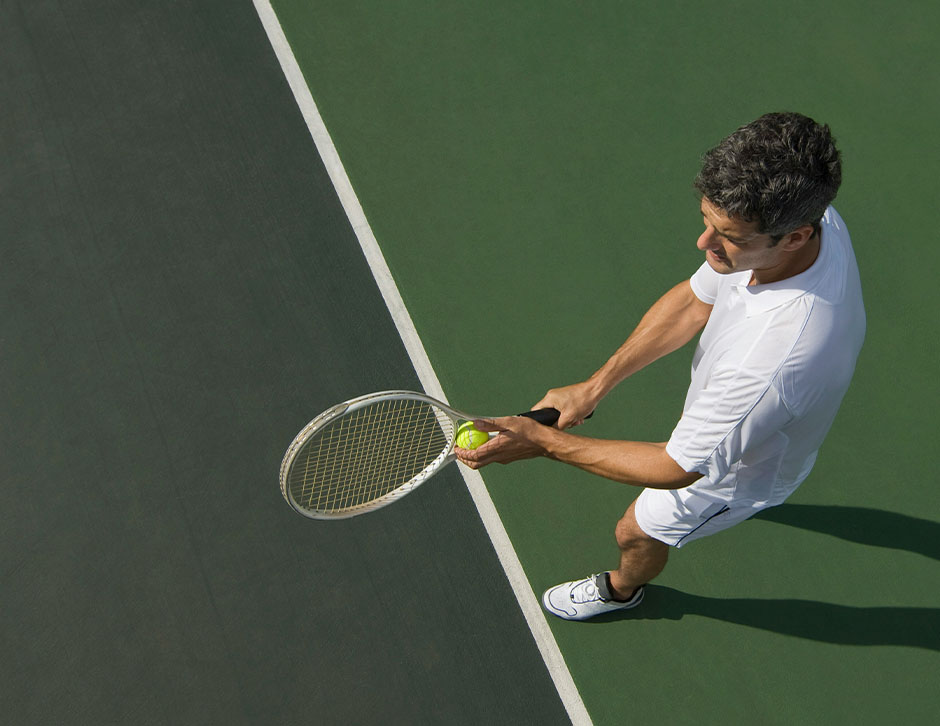
Here’s what we’ll cover in this blog post:
- Djokovic’s success in the 2025 US Open
- Understanding biological age vs. chronological age
- Nutrition as fuel for longevity
At 38, Novak Djokovic reached the semifinals of the 2025 US Open. He didn’t win, but he did something arguably more interesting: he challenged the assumption that athletic performance must decline linearly with age.
That’s a strategy grounded in something we talk about every day at AgelessRx: biological age.
Aging is not a binary process, a line crossed between “old” or “not old.” It’s a gradual loss of resilience across physiological, metabolic, and cognitive functions that happens faster or slower depending on how you live. Djokovic appears to have slowed it down. The real question is how.
The answer is it’s a skill. And it’s one you can start building today.
Biological vs Chronological Age Explained
While Djokovic’s passport says he’s 38, his body tells a different story. This is the essence of biological age, a measure of how well your cells, tissues, and organs function compared to your actual age in years, or your chronological age.
Chronological age is a constant. It increases predictably, one day at a time. But it tells you almost nothing about how well your body is functioning. That’s where biological age comes in.
Biological age attempts to quantify how “old” you are functionally. It reflects damage at the cellular and molecular levels, the efficiency of repair mechanisms, metabolic integrity, cognitive function, and more.
While chronological age is fixed, biological age is dynamic. It can be influenced, slowed, and, in some cases, reversed. But only if you’re measuring the right variables and acting on them consistently.
In Djokovic’s case, his training, nutrition, recovery, and stress management suggest his biological age is far lower than his chronological age, and his performance reflects it.
Plant-Based Nutrition as Fuel for Longevity
Djokovic credits much of his sustained success to his plant-based diet, which emphasizes whole, nutrient-dense foods. This approach helps reduce chronic inflammation, a key driver of aging and disease.
While there are many ways to construct a diet that supports longevity, the key features are remarkably consistent across models: low in refined carbohydrates, high in fiber, adequate in protein, and rich in micronutrients.
There is also the question of metabolic control. Frequent spikes in glucose and insulin are associated with accelerated biological aging. Diets that minimize these spikes tend to support mitochondrial function, lower inflammation, and improve recovery. What matters most isn’t whether you eat plants or meat, but how your food choices impact your biomarkers over time.
How your body responds to food through blood glucose, insulin sensitivity, and inflammation markers can tell you how well you’re aging. Interested to see what spikes your glucose? Try a Continuous Glucose Monitor (CGM).
Recovery as a Longevity Practice
Djokovic doesn’t rely solely on rest days to bounce back. Instead, he uses innovative recovery protocols to actively support cellular repair. This is where Djokovic arguably differentiates himself. His attention to recovery is clinical.
He protects sleep quality through his routine, plus light control and recovery protocols. He uses modalities like hyperbaric oxygen therapy (HBOT) and cryotherapy, both of which may reduce inflammation and enhance cellular repair, though the evidence is still emerging.
But you don’t need HBOT to recover well. Sleep alone is profoundly therapeutic, assuming it’s quality, restful sleep. Likewise, consistent exercise balanced with adequate rest and nutrient support can drive improvements.
At the cellular level, recovery involves repairing oxidative damage, clearing senescent cells, and maintaining mitochondrial health, making tools like NAD+ supplementation very promising.
By supporting your body at the cellular level, you can boost recovery, minimize long-term wear and tear, and sustain strength and energy well past your peak years.
The Mental Impacts of Longevity
Djokovic says mental toughness is “not a gift,” but comes with work. Chronic stress is pro-aging. It alters cortisol rhythms, disrupts sleep, impairs immune function, and contributes to metabolic dysfunction. It also accelerates biological aging by shortening telomeres, the protective caps on DNA. Stress literally sets a fire under aging.
Djokovic’s mental conditioning is one of his greatest assets. Through meditation, visualization, and mindfulness, he manages stress, builds resilience, and stays mentally sharp under pressure.
Chronic stress accelerates biological aging by shortening telomeres. By mastering his mind, Djokovic not only gains a competitive edge, but also protects his long-term health.
The Future of Longevity, Inspired by Djokovic
You don’t need to be a world-class athlete to benefit from the same principles. The mechanisms that preserve Djokovic’s performance—metabolic control, mitochondrial function, inflammation management, psychological resilience—are the same ones that preserve healthspan for all of us.
Most people wait until they feel older to think about aging. But the earlier you understand how your body is doing beneath the surface, the more options you have to change the trajectory.
If you’re not sure where to begin, start by getting a clearer picture of your own longevity profile.
Take our Longevity Quiz to see how your current habits may be influencing your biological age and what small shifts could make a lasting impact.
Note: The above statements have not been evaluated by the Food and Drug Administration. This product is not intended to diagnose, treat, cure, or prevent any disease.
